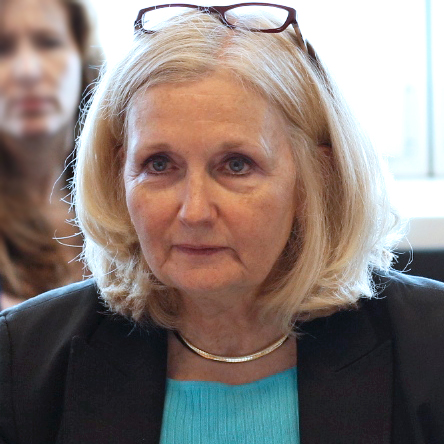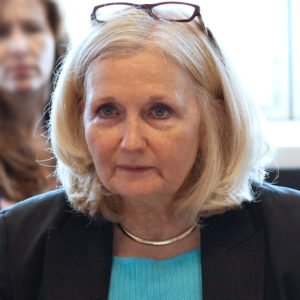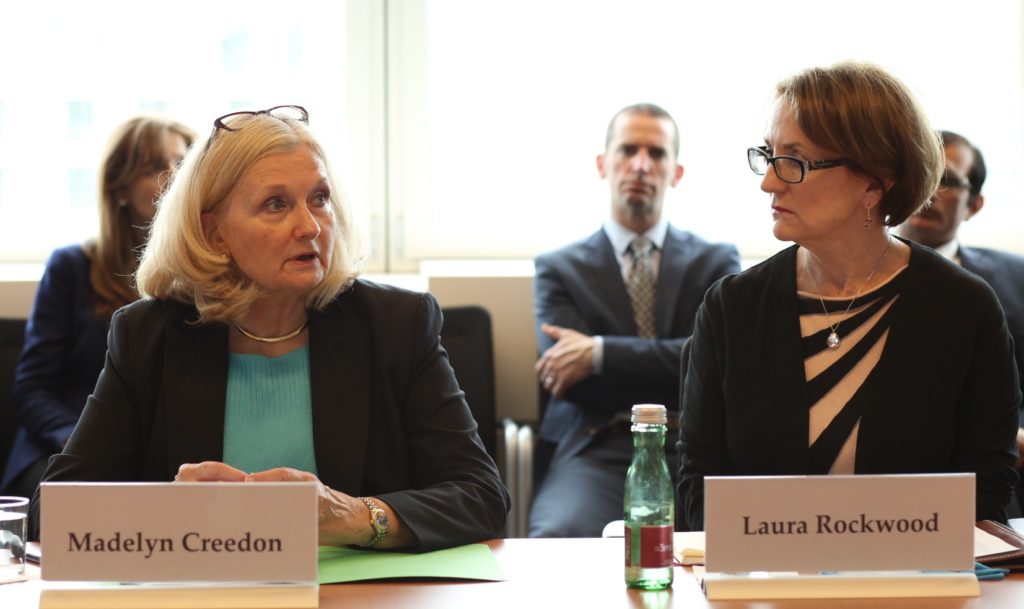
On 15 June 2016, the VCDNP hosted a seminar entitled "Bridging Deterrence and Disarmament" featuring Ms. Madelyn Creedon, Principal Deputy Administrator for the National Nuclear Security Administration (NNSA). Ms. Creedon discussed how U.S. nuclear policy helps to shape the global security environment. Ms. Creedon provided a thorough overview of the science behind the United States' Stockpile Stewardship Program (SSP)—which incidentally supports other applications—and stressed how these efforts enable long-term nuclear weapons reductions in line with both President Obama’s 2009 Prague vision and the 2010 Nuclear Posture Review.

Ms. Creedon noted that the science behind the SSP not only underpins the United States' moratorium on nuclear explosive testing, but is the foundation for successful non-proliferation efforts, including verification regimes and other non-weapons technologies. Ms. Creedon emphasized that—unlike in 1999 when the Comprehensive Nuclear Test-Ban-Treaty (CTBT) was rejected in the U.S. Senate—there is now confidence in the sciences that the nuclear stockpile can be maintained without testing. A few days earlier, in a panel chaired by Ms. Creedon—in a side event to the Comprehensive Nuclear Test-Ban-Treaty Organization’s (CTBTO) Ministerial Meeting—the directors of three U.S. nuclear laboratories (Los Alamos National Laboratory, Lawrence Livermore National Laboratory and Sandia National Laboratories) echoed this confidence in the sciences. The increased confidence in the sciences and stockpile verification is a positive endorsement for educating future U.S. Senators prior to a prospective second attempt to ratify the CTBT in the United States. The technical uncertainties that plausibly existed in 1999 are no longer relevant today. Any future objections would therefore be of strategic or political nature.
View Madelyn Creedon’s PowerPoint presentation
Ms. Creedon provided an overview of the notable reductions in the size of the U.S. nuclear weapons arsenal (both strategic and non-strategic nuclear weapons) and noted that it is hoped that others would reciprocate in the U.S. transparency initiative on nuclear inventory. The U.S. argues that “increasing the transparency of global nuclear stockpiles is important to non-proliferation efforts, including commitments under the Nuclear Non-Proliferation Treaty, and the pursuit of further reductions that cover all nuclear weapons: deployed and non-deployed, strategic and non-strategic”.
The U.S. is committed to maintaining the safety, security and effectiveness of the nuclear deterrent in the absence of nuclear explosive testing. The NNSA ensures that the U.S. sustains its nuclear deterrent through the application of science, technology, engineering and manufacturing. Maintaining the active stockpile, Life Extension Programs (LEPs) and weapons dismantlement requires continued investment. Misinformation and conflation exists about the “modernization” of and investment in the U.S. nuclear program. It was argued that LEPs do not represent modernization but are necessary measures given the age of the stockpile. In fact, it was argued that LEPs will enable further reductions. Though the delivery systems and platforms are being replaced and adapted, Ms. Creedon explained there are ‘no new nuclear warheads and that LEPs will only use previously tested designs and not support new military missions or provide for new military capabilities’. Continued transparency of nuclear stockpiles enhances trust and confidence between states, together with engagement and awareness raising within civil society further contributes to a dialogue on steps towards nuclear disarmament.
